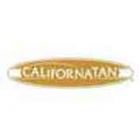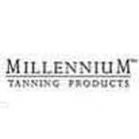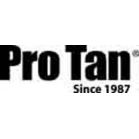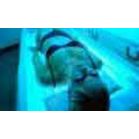Tanning Safety
Safety
The light of the sun contains invisible ultraviolet rays: UVA, UVB, UVC. The first two types are the most dangerous. UVA rays cause skin aging and wrinkling and are associated with skin cancer because they burn the deeper layers of the skin. This is how tanning occurs. UVB rays are what we call the burning rays of the sun and are the primary cause for sunburns and cancer. However, both types of rays are very dangerous and protection should be taken against exposure to them.
Tanning is in fact proof that the skin has been damaged. Tanning of the skin occurs when UV rays come in contact with a certain type of cells in the skin called melanocytes which produce a pigment called melanin. Under the effect of the sun these cells produce even more melanin so as to protect the skin from damage. It acts as a natural shield in the form of a brown tint people call suntan. People can have different types of skin with different concentrations of melanin, thus, different degrees of natural protection against the sun. Tanning turns into a sunburn when the amount of UV rays is greater than what can be absorbed by the melanin in the skin. At that point the melanin can no longer ensure the safety of the skin. For example Scots/Welsh/Irish and red-headed have skin type I which is the most sensitive to sunburns and in effect never tans. To the opposite pole, African-Americans have skin type VI, a deeply pigmented skin that is sun insensitive.
Despite the type of skin, everyone should take sun safety seriously because now more than ever the harmful UV rays travel through the ozone layer a lot easier than they did a century ago and are consequently more dangerous.
Although sunburns are easily cured within a few days with some skin peeling, there are dangerous long lasting effects of sunlight exposure. Youths have more sensitive skin that grownups. Continuos exposure starting before the age of 18 can eventually cause permanent damage to the skin such as wrinkles, brown age spots, blotchiness, freckles and leathery, sagging skin that appears older than it is. Sunlight does not only affect the skin but also the eyes (it can cause cataract) and weaken the immune system.
The UV rays concentration in the sunlight varies at different altitudes and in different seasons. For example the UV rays are the strongest during the summer and around the Equator but also at high altitudes because the rays penetrate the protective shield of the Earth easier. It is a misguided conception that sunlight is harmful only during the summer or sunny days. The safety of the skin is jeopardised even during the winter when almost 80% of the UV rays are reflected by the snow and during overcast days when a considerable amount of rays penetrate through the clouds.
The worst sunburns occur during incidental sun exposure and not at the beach. However, because people cannot live inside all their lives it is best to use all means of protection to prevent potential skin damage. First of all, avoid the strongest rays of the sun between hours of 10:00am and 4:00pm. It doesn't really matter of it's a cloudy or sunny day, the UV rays still come through and reflect upon surfaces and then onto the skin.
The best protection is to cover up the most sensitive areas as much as possible. If possible wear long sleeved tops, trousers and brim hats.
Sunscreens protect the skin from damaging and prevent skin cancer. They should be used consistently if going out for more than 20 minutes. It should be applied generously on all of the exposed areas 15-30 minutes before going out. The sunscreen needs some time to develop a protective shield. If staying outdoors for longer, reapply after 2-3 hours. Sunscreens come into various shapes or forms, with different SPF (Sun Protection Factor). The SPF indicates the degree of protection from UV rays and in effect tells you how long you can stay in the sun without burning if you apply the sunscreen. A SPF of 15 for example gives you protection of 15 times the time it takes for your skin to burn. Sunscreens also come in waterproof or sweatproof formulas but even their effect wears off after about 80 minutes. Sunscreen should be reapplied regularly to ensure proper skin protection and safety.
Unfortunately sunscreens are not enough to ensure a proper degree of sun safety. It's best to avoid peak times between 10:00am and 4:00pm, seek shade whenever possible and wear protective clothing.
Tanning is perceived as a sign of beauty of the skin. Unfortunately medically speaking, it is in fact a sign of skin damage. If you want to protect your skin from the sun you have to block out UV rays and tanning. There is no way of developing a tan in the sun without exposing yourself to UV rays. Alternate means of getting a tan include sun beds although they work using UV rays and in the long run prove to be just as harmful.
Fortunately there is a way to develop a tan without causing damage to your skin. Recent years have seen development of fake tan products coming in the shape of lotions or sprays that can be applied to the skin and which produce a deep tan lasting several days. These products are safe, easily affordable and convenient. Protect your skin now before it's too late. If you want a beautiful tan, you don't have to stay in the sun to get it.
Directions for Sunless Tan application.
Shower using an exfoliating product and a scrunge sponge. Note the dark tracer in Sunless Tan for even application. The tracer will wash out of pajamas or sheets. Wear rubber gloves that are provided. This will keep your hands from staining. Only exfoliate on every fifth application. Allow Sunless Tan to dry usually fifteen to thirty minutes.
Basics
Use slightly more Sunless Tan self tanner than you would regular lotion or cream. Use a circular motion to rub it in, to avoid streaks. Make sure you cover all the areas of your body (don't forget your sides, or your armpits, or you will look funny). Focus on one area at a time. Use less tanner on the joints (knees, elbows, ankles) and on the tops of your feet. Avoid getting Sunless Tan sunless tanner on the bottom of your feet, the palms of your hands, and in your hairline.
Flair
This is how I do it. It works for me, but other people might apply their tanner slightly differently. I start with my calf. I apply the Sunless Tan here first, and rub it into the tops of my feet and onto my knees. I never put Sunless Tan directly onto those two areas. I work my way up one leg and then the other. Then it's onto my torso, and up to my neck. When I get to my face I make sure I don't have too much self tanner on my gloved hand. I put just enough on, and make sure to blend it in well. I make sure that I rub Sunless Tan self tanner from my neck and up into my face, blending well to avoid any blotches or lines.
The last area I do are my arms. I put some of the tanning lotion onto my upper arms and blend it into my shoulder, pits, sides, and back. I work my way down to my elbows (never put the tanning product directly onto your elbows, always blend from other places). Then I work on my forearms. At this time I take off the gloves, and work the tanning cream down from my arm, over my wrists and onto the back of my hands.
Don'ts
Don't put Sunless Tan sunless tanning lotion directly onto joints.
Don't let Sunless Tan pool up in between your fingers or toes. Where application gloves provided.
Don't forget to exfoliate.
Don't put on clothes for at least fifteen to thirty minutes.
Don't let water come in contact with an area where you have put Sunless Tan sunless tanner.
Special Hints
Sunless Tan has a tint or tracer so you can see where you are putting the tanner. This way you see the streaks before they show up. You can make sure you are applying the tanner evenly. Wait one day and apply again. Follow with weekly applications of Sunless Tan Tanning Cream to maintain your Golden Brown Tan. If you have a significant other who will help you apply the tanner, they will be a great asset for application to areas hard to reach.
No animal testing ever!



























